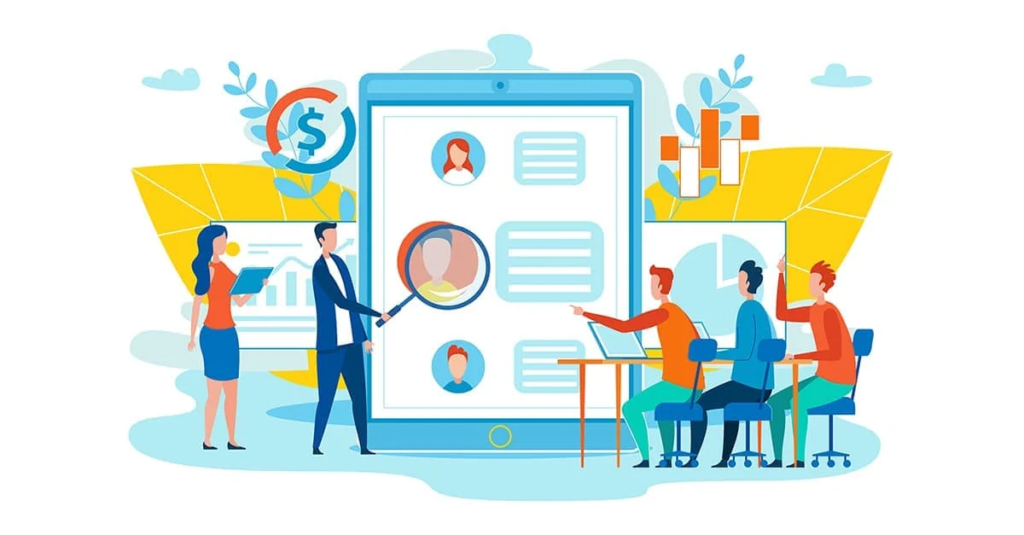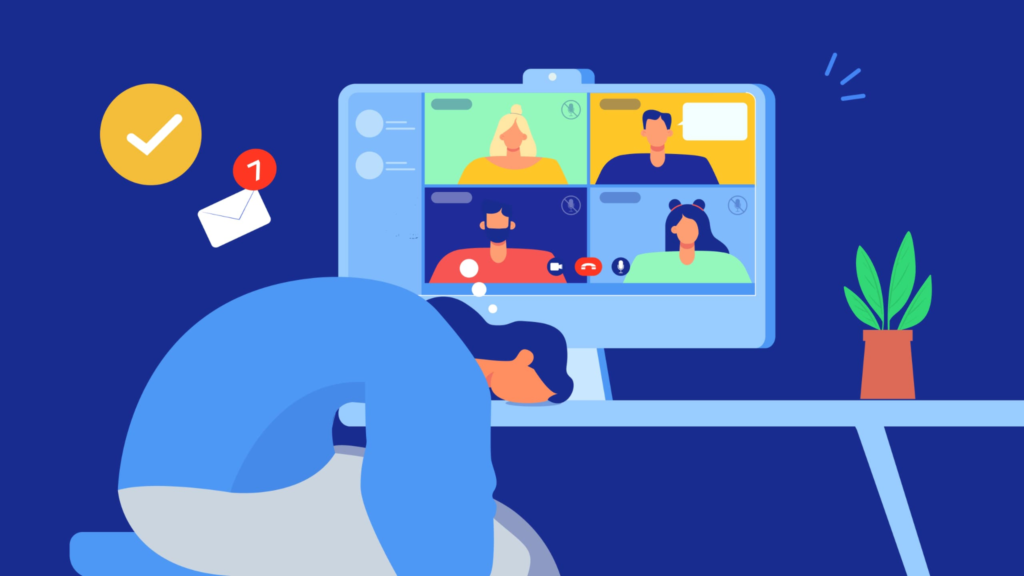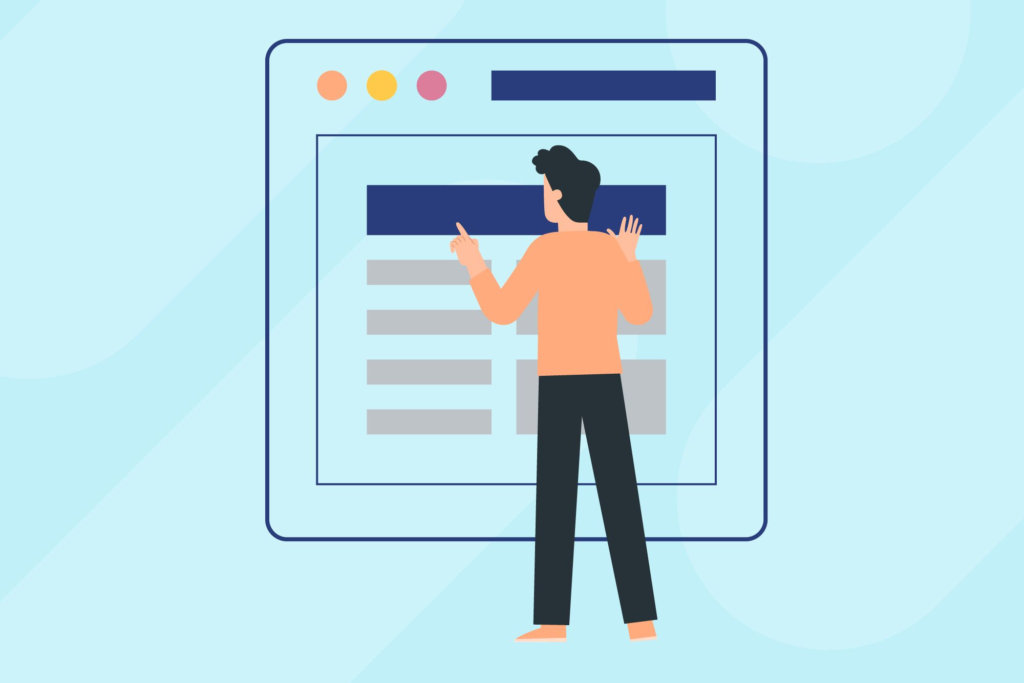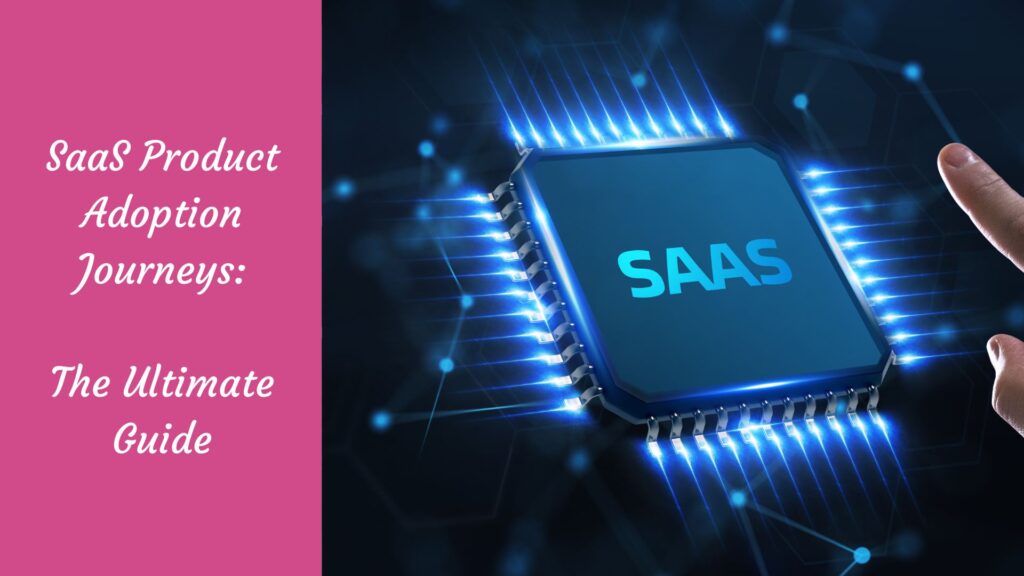Struggling to get your customers to fully utilize your SaaS product? You’re not alone. Many businesses face this challenge, missing out on the chance to maximize the value they provide.
But there’s a way through! Our blog, “SaaS Product Adoption Journeys: The Ultimate Guide,” is your lifeline. It’s packed with insights and practical tips to boost user engagement and ensure your customers make the most out of your software.
Don’t let your hard work go unnoticed. Learn how to elevate your product’s adoption today!
Understanding SaaS Product Adoption

Understanding SaaS Product Adoption can feel like trying to solve a complex puzzle with a ton of moving pieces. But, when you break it down, it’s all about getting folks to not just try your product but to integrate it into their daily grind so they can’t imagine their workflow without it. Think of it as converting that first date into a long-term relationship. Here’s a straightforward breakdown with examples that’ll make you go, “Ah, got it!”:
What is Product Adoption?
First off, Product Adoption is a fancy term for getting your customers to routinely use your SaaS product in a meaningful way. It’s crucial because, in the SaaS realm, if your software isn’t sticky enough to keep users coming back, your business model might hit a snag pretty fast.
The Stages of SaaS Product Adoption
- Awareness: The “Hey, I exist!” stage. This is when potential customers first catch wind of your product. Think seeing an ad for Slack and thinking, “Neat, a way to reduce unnecessary meetings.”
- Consideration: Here, they’re digging deeper, like going on a few more dates with Slack, reading reviews, and checking out competitor offers.
- Decision: The commitment stage. They’ve decided Slack is the one they want to wake up to every workday.
- Retention: This is all about keeping the flame alive. Slack does this with new feature updates and top-notch customer support.
- Advocacy: The ultimate goal. Users love Slack so much; they’re telling everyone how it changed their work life.
Key Metrics to Measure SaaS Product Adoption
- Adoption Rate: How fast are new sign-ups turning into active users? It’s like measuring how quickly people are swiping right on your product.
- Time to First Value (TTFV): How long does it take for a new user to get that “a-ha” moment from your product? The quicker, the better.
- Daily/Monthly Active Users (DAU/MAU): This tells you how many people are regularly using your app. Think of it as your daily or monthly roll call.
- Churn Rate: This metric is a bit of a downer. It’s the rate at which customers are saying, “It’s not you, it’s me,” and breaking up with your product. Lower is definitely better here.
- Net Promoter Score (NPS): This is a classic. It measures customer satisfaction and loyalty by asking, “On a scale from 0 to 10, how likely are you to recommend our product?” High scores mean you’re doing something right.
Integrating these elements into your SaaS growth strategy, alongside leveraging SEO best practices and optimizing for popular SERPs, can significantly improve product adoption rates. Remember, it’s about making your product an indispensable part of your users’ daily routines, using data-driven insights to guide your enhancements, and always aiming for that sweet spot of customer satisfaction and advocacy.
Factors Influencing SaaS Product Adoption
Understanding the nuances that drive SaaS Product Adoption is crucial for any SaaS business aiming to scale. Here, we’re breaking down additional factors in layman’s terms, complete with examples and expert tips.

The Role of User Experience (UX) in Adoption:
- Simplifying the Onboarding Process: Think of this like helping a friend move. If you label each box clearly and provide a map of where everything goes, they’ll settle in much faster. Tools like UserGuiding offer interactive guides that do just that for your SaaS product.
- Intuitive Design and Usability: Ever used an app and thought, “This just makes sense”? That’s the goal. For example, Trello’s drag-and-drop functionality makes managing projects a breeze, turning newbies into power users in no time.
The Impact of Customer Education:
- Utilizing Tutorials, Webinars, and Documentation: This is like having a knowledgeable friend you can call for advice instead of figuring it out alone. Platforms like Skillshare excel in making learning easy and accessible.
- The Importance of Accessible and Engaging Learning Resources: Ever found a YouTube tutorial for exactly what you needed? That’s the sweet spot. SaaS companies should strive to create content that resonates just like Moz’s SEO guides.
Leveraging Social Proof and Testimonials:
- Case Studies and Success Stories: It’s like when your neighbor sees you’ve hired a great landscaper and decides to hire them too after seeing your yard. Airbnb’s success stories inspire trust and show real-world applications.
- User Reviews and Ratings: Similar to checking ratings before choosing a restaurant. Software like Trustpilot helps potential customers gauge product value through real user experiences.
Pricing Models and Their Effects on Adoption:
- Subscription vs. Freemium Models: Imagine a gym membership. Some offer a free trial (freemium), letting you try before you buy, while others require sign-up but provide more value (subscription). Spotify does a great job of this, offering both options to suit different user needs.
- Pricing Transparency and Flexibility: This is about avoiding the “hidden fees” scenario on a bill. Be as clear as Netflix with what your SaaS product costs upfront, and flexible enough to accommodate varying budgets and needs.
By focusing on these key factors and employing practical strategies, SaaS companies can not only attract users but turn them into loyal advocates. Remember, integrating SEO strategies with valuable content on popular SERPs enhances visibility and attracts a wider audience, driving adoption and growth.
Strategies to Enhance SaaS Product Adoption
Adopting a SaaS product is kind of like trying a new restaurant based on a friend’s recommendation – you’re more inclined to give it a shot if the experience is curated just for you. Here’s how:

Personalization of User Experience
- Custom Onboarding Flows: Imagine walking into a party where someone greets you by name, takes your jacket, and introduces you to a group of folks you’ll likely hit it off with. That’s the vibe you want with custom onboarding – making every new user feel right at home from day one. A tool that nails this is Intercom, offering personalized communication paths based on user behavior.
- Tailored Communication and Support: Think of this like your favorite barista remembering your order – it shows they care. Personalizing emails and support messages can make users feel special. HubSpot does a great job with its CRM, letting you tailor messages based on user data.
Implementing Feedback Loops
- Gathering User Feedback: It’s like checking reviews before buying a new gadget. Using tools like SurveyMonkey to regularly ask your users how you’re doing helps you stay on track.
- Continuous Improvement Based on Insights: Ever notice how apps update and suddenly they’ve fixed something that bugged you? That’s all about acting on the feedback you’ve collected. Continuous improvement shows you’re listening and committed to making things better.
Enhancing Product Visibility and Awareness
- SEO Strategies for SaaS: Imagine you’re a new coffee shop in town. You want to show up when someone Googles “best coffee near me.” That’s what SEO does for your SaaS product. Optimizing content with keywords related to your niche helps you climb SERPs. Check out Ahrefs for a deep-dive into keyword research and backlink tracking.
- Content Marketing and Thought Leadership: This is about being the person at the party who has cool stuff to say that people actually want to hear. Producing engaging, valuable content positions your brand as a leader. Medium is a fantastic platform for sharing insightful blogs that resonate with your target audience.
Building a Community Around Your Product
- Forums and User Groups: Think of this as starting your own club where everyone’s into the same nerdy stuff as you. Creating a space for users to share tips, tricks, and support each other fosters a sense of belonging. Reddit can be a goldmine for community engagement.
- Social Media Engagement: This is like maintaining a friendly presence in your local community. Being active on platforms like Twitter and LinkedIn helps you stay connected with users and keeps your product top of mind through regular updates and interactions.
By integrating these strategies into your SaaS product’s growth plan, you’re not just selling a product; you’re offering an experience that’s as irresistible as a cup of gourmet coffee from your favorite local cafe. Remember, the key to widespread adoption isn’t just about making waves – it’s about creating lasting ripples that resonate with your user base.
Overcoming Common Challenges in SaaS Product Adoption

In the world of SaaS (Software as a Service), getting folks on board with your product isn’t always a walk in the park. Users can be a bit set in their ways or worried about the technical hurdles and security risks. But don’t sweat it; there are tested strategies to win them over, peppered with a few examples to get the wheels turning.
Strategies to Mitigate Resistance and Encourage Transition
- Make the Benefits Clear as Day: Just like how Spotify lets you discover music you’d never find on your own, illustrate the unique benefits your software brings to the table. Sometimes, all it takes is showing users what they’re missing out on.
- Offer Stellar Support: Think about the peace of mind you get knowing you can pop into the Apple Store and get face-to-face help. Creating a support system, whether it’s live chat on your site or easy-to-access customer service, can ease the transition pains.
- Provide Real-Life Success Stories: Nothing speaks louder than success. Case studies or testimonials work like Amazon reviews, giving potential users a peek into how others have successfully made the switch. Check out Salesforce’s customer success stories for inspiration.
Overcoming Technical Barriers
- Ensuring Compatibility and Integration: Just like how effortlessly your Apple Watch syncs with your iPhone, ensuring your software plays nice with other apps and services is crucial. Make it easy by providing clear integration guides or automated setup processes.
- Simplifying Migration Processes: Think of it as moving to a new house. Services like MoveBot make the hefty task of moving your digital stuff from one cloud service to another a breeze. Offer guidance or tools to make the migration to your platform as painless as possible.
Addressing Security Concerns
- Highlighting Security Features and Compliance Certifications: Just as VeriSign badges on websites make you feel your information is secure, flaunting your software’s security features and compliance badges can alleviate concerns. Be transparent about your security practices, similar to how Dropbox explains their security measures.
- Building Trust through Transparency: Remember the calm that comes from tracking a package all the way to your doorstep? Apply the same principle by being open about your service’s performance and any incidents. Tools like Statuspage help keep users in the loop, building trust through transparency.
Navigating the hurdles to SaaS product adoption doesn’t have to feel like convincing your grandparents to use FaceTime. With the right approach—mixing clarity, support, and security—you can address users’ concerns head-on, making the transition to your software smooth sailing.
Case Studies: Successful SaaS Product Adoption Journeys
Startups That Absolutely Crushed It
When it comes to SaaS startups that truly understood the assignment, a couple of heavy hitters come to mind. Their strategies? A cocktail of SEO savviness, killer content, and community vibes that turned users into superfans.
- Slack: This messaging platform for businesses turned the world of internal communication on its head. With a focus on SEO from the get-go, they ranked high on SERPs for keywords like “team communication tool.” Add in engaging content that answered every possible question about remote work communication, and you’ve got a recipe for success.
- Zoom: Here’s a name we all know a bit too well. Pre-2020, Zoom was gearing up with content that supported the idea of remote work as the future. When the world suddenly switched to remote, Zoom was the first name on everyone’s lips, thanks to their top-notch SEO and content that was ready to answer the call.
Lessons from Missed Shots
Not every SaaS startup is gonna hit it out of the park. Here’s where some missed the mark and what you can learn from them:
- Ignoring SEO: If no one can find you, no one can use you. It’s like opening a lemonade stand in a desert.
- Underestimating the Power of Community: Users trust other users. A startup that failed to create a platform for user interaction missed out on organic growth and valuable feedback.
- Neglecting User Education: Not everyone knows what SaaS is or even how powerful it can be. Startups that didn’t invest in educating their potential users about the benefits of their product found it tough to convert interest into adoption.
By analyzing both the victories and the stumbles, SaaS startups can chart a course that not only avoids common pitfalls but also capitalizes on proven strategies for success. Whether it’s leveraging SEO to its fullest, building a robust online community, or investing in user education, the path to SaaS product adoption is paved with strategic forethought and user-centric initiatives.
The Future of SaaS Product Adoption
The way we’re all hopping onto SaaS (Software as a Service) products is kind of like jumping on the bandwagon of the latest TikTok trend—it’s here, it’s happening, and if you’re not a part of it, you’re missing out. The future of how we adopt these nifty tools is getting a facelift, thanks to a couple of big moves in the industry. Here’s the breakdown:

Trends Shaping the Future of SaaS
- AI and Machine Learning: Imagine Netflix’s recommendation system but for business software. That’s where we’re headed, folks. AI and Machine Learning are like having a smart assistant that knows exactly what you need before you even remember you need it, making software smarter and more intuitive. Here’s a quick look at how Salesforce uses AI to revolutionize customer relationship management.
- Increased Focus on Customer Success: If there’s anything we’ve learned from companies like Amazon, it’s that taking care of your customers pays off. SaaS is turning up the dial on customer success, ensuring users aren’t just satisfied but are raving fans. Check out HubSpot’s Customer Success program for a masterclass in doing it right.
Predictions for Product Adoption Strategies
- Personalization at Scale: With tools like Segment, SaaS companies can now offer you a tailored experience that feels like it’s made just for you, whether you’re company numero uno or a hundred. The more personalized the experience, the less likely you are to hit unsubscribe.
- Growth of Community-Driven Adoption: Ever heard of someone choosing a product because their buddy couldn’t stop talking about it? That’s community-driven adoption in a nutshell. Platforms that build a community, like Slack’s vibrant user groups, not only grow faster but also stickier.
To wrap it up, the future of SaaS product adoption isn’t just about creating stellar software; it’s about making it as easy as Googling the latest meme. AI and personalization are gonna make sure the software fits like a glove, while a strong sense of community and a focus on making customers happy are key to keeping that glove on. Stay tuned, because the SaaS world is about to get even more exciting!
FAQs
FAQ 1: What Are the Key Stages of a SaaS Product Adoption Journey?
Answer: The SaaS product adoption journey typically includes several key stages: Awareness, where potential users first learn about the product; Consideration, where they evaluate its suitability; Decision, where they choose to adopt it; Retention, focusing on keeping users engaged; and Advocacy, where satisfied users recommend the product to others.
FAQ 2: How Can Personalization Enhance the SaaS Product Adoption Experience?
Answer: Personalization can significantly enhance the adoption experience by tailoring the onboarding process, content, and support to meet individual user needs and preferences. This approach not only speeds up the adoption process but also increases user satisfaction and engagement.
FAQ 3: What Role Does Customer Feedback Play in SaaS Product Adoption?
Answer: Customer feedback is crucial in identifying areas for improvement and understanding user needs. Implementing feedback loops allows SaaS companies to refine their products continuously, address user concerns effectively, and create a more user-centric product that fosters higher adoption rates.
FAQ 4: Why Is Security a Major Concern in SaaS Product Adoption, and How Can It Be Addressed?
Answer: Security is a major concern because SaaS products often handle sensitive data and operate in the cloud. Addressing security concerns involves incorporating robust security features, ensuring compliance with relevant regulations, and communicating these measures transparently to build trust with potential and current users.
FAQ 5: What Future Trends Are Expected to Influence SaaS Product Adoption Strategies?
Answer: Future trends likely to influence SaaS product adoption include the increasing use of AI and machine learning for personalized experiences, greater emphasis on customer success as a growth driver, and the rise of community-driven adoption strategies. These trends emphasize the importance of innovation and user-centric approaches in fostering product adoption.
Conclusion
In conclusion, SaaS product adoption is evolving rapidly, with a strong emphasis on AI and machine learning, personalized user experiences, customer success, and community-driven strategies. By understanding these trends and incorporating them into their approach, SaaS companies can significantly enhance user adoption and satisfaction.
To stay ahead in this dynamic field, it’s crucial to remain adaptable and focused on delivering exceptional value to users. For those keen to dive deeper and stay updated on the latest strategies and insights in SaaS product adoption, don’t hesitate to LEARN MORE.

10+ years experience in Marketing and Operations
